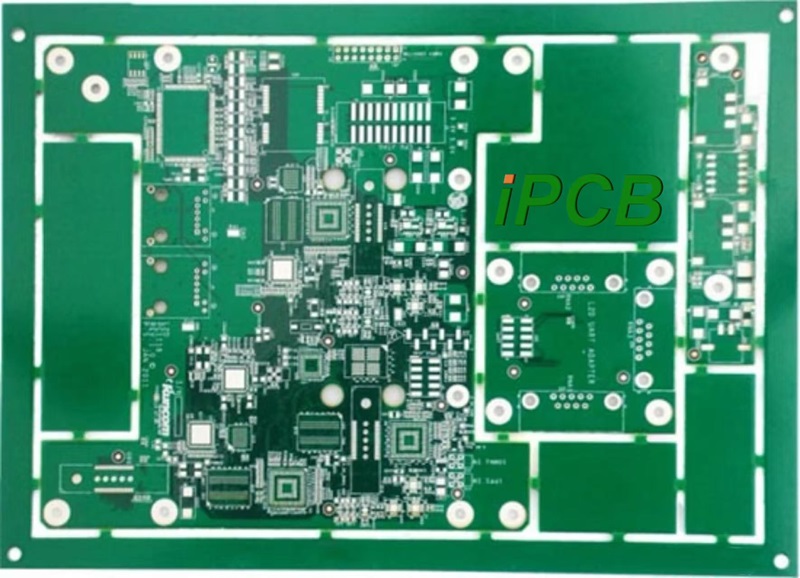When it comes to electronic product development, the first thing that comes to mind is the circuit pcbboard. It is not merely a substrate that carries electronic components, but also the core platform for realizing the entire product's functionality. Therefore, selecting the right type of circuit board can enhance our project's efficiency in terms of performance, cost, reliability, manufacturability, and even time to market. Choosing the wrong one, however, can lead to a chain reaction of costs, technical risks, and market risks.
The following content will systematically outline how to select the most suitable circuit PCB board based on project characteristics.

circuit pcb board
Clearly define the final application scenario of the circuit board.
Before selecting a circuit pcb board, it is essential first to understand the application environment and functional objectives of the electronic product. Is it a wearable medical device with high requirements for flexibility and temperature resistance? Or is it a router processing high-speed data that requires control of signal integrity and electromagnetic interference? Or is it a battery management module for new energy vehicles that requires high temperature resistance and vibration resistance?
Additionally, when developing a complex electronic product, different functional modules often have distinct requirements for circuit pcb board, Whether it is the power management zone, high-speed signal processing zone, or RF communication module, each area requires a PCB type and material that are most suitable for its specific operational environment and electrical characteristics. No single PCB can meet all requirements, and zone-based design and differentiated PCB selection have become standard practices in high-end electronic design.
Understanding Common Types of Circuit PCB Boards
Different types of PCB structures are suitable for different application scenarios:
Single-sided PCB: Copper traces are only present on one side of the substrate material, making it the most basic and cost-effective option. Its simple structure is suitable for cost-sensitive, functionally simple devices such as consumer electronics, toys, calculators, and LED lighting products.
Double-sided PCB: Conductive copper layers are present on both sides of the substrate, with vias connecting the circuits between layers. This structure improves routing efficiency and component density, making it widely used in industrial control systems, power supplies, HVAC systems, and various electronic manufacturing applications.
Multilayer Board: Composed of three or more copper layers laminated with insulating materials such as prepreg and core boards. These circuit pcb boards support complex high-density designs by providing greater routing space and higher signal integrity. They are critical for high-speed digital circuits and are suitable for high-performance devices such as smartphones and industrial modules.
In addition, there are high-frequency, high-speed boards commonly used in communications, 5G, radar, etc.; flexible circuit boards that can be folded, twisted, or conformed to tight spaces, widely used in wearable devices, digital cameras, and other compact consumer electronics; as well as rigid circuit boards, rigid-flex boards, ceramic circuit pcb boards, and more. When selecting, it is important to balance performance requirements with manufacturing costs.
Materials are the foundation of circuit board selection
Please stop saying, “FR-4 is sufficient.” Even high-dielectric-constant FR-4 cannot replace high-frequency materials in terms of performance. Different application environments and frequency requirements necessitate the selection of appropriate PCB substrates. The dielectric constant, thermal expansion coefficient, and thermal conductivity of the material directly determine the signal quality and reliability of the product. Circuit pcb board material selection should not be based on convenience or cost savings, nor should it follow trends blindly.
FR-4: Cost-effective and suitable for most general-purpose applications
Rogers/Teflon: Excellent high-frequency performance, suitable for RF, radar, and other communication equipment
PI (Polyimide): Flexible and heat-resistant, commonly used in aerospace or rigid-flex boards
PEEK: High thermal stability, chemical resistance, and mechanical strength, but expensive. It is typically found in aerospace, military, or medical electronics.
PCB boards are not just a supporting role in a product; they are the foundation of the entire system. The earlier you choose the right one, the more you can save on trial-and-error costs and ensure product performance.
Do you have a project in hand but are unsure how to choose a circuit pcb board? Feel free to contact us at any time, and we will provide you with a PCB solution that truly considers your product. At iPCB, we are not just manufacturers; we are your engineering support partners. We focus not only on “being able to do it” but also on “doing it best."